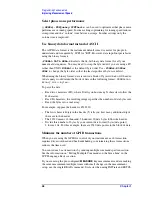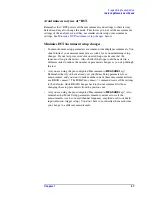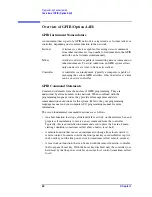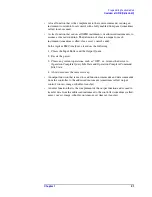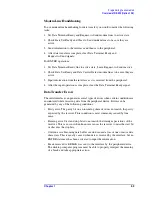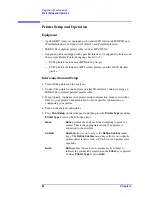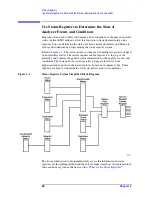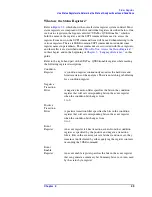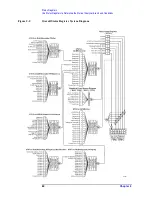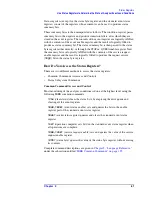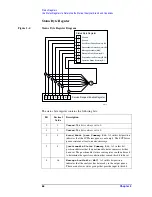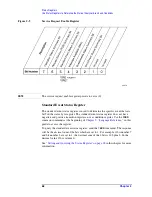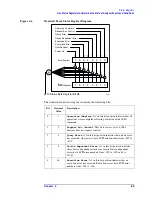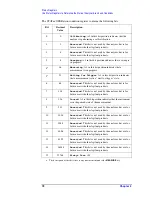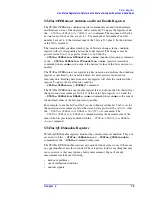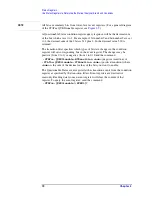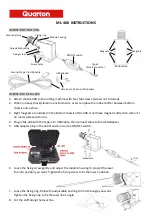
Chapter 2
59
Status
Registers
Use Status Registers to Determine the State of Analyzer Events and Conditions
What are the Status Registers?
Refer to
, which shows the overall status register system in detail. Most
status registers are composed of the five individual registers described below. One
such status register in the figure is entitled “STATus: QUEStionable,” which is
both the name of the register, and the SCPI command form used to access the
register. From now on, the SCPI command form will be used when referring to the
various registers. There are IEEE common SCPI commands noted under some
register names in parenthesis. These commands are associated with those registers,
and their effects are described under
“How Do You Access the Status Registers?”
in this chapter, and in the beginning of
Chapter 5, “Language Reference,”
guide.
Refer to the right-hand part of the STATus: QUEStionable register while reading
the following register descriptions.
Condition
Register
A condition register continuously monitors the hardware and
firmware status of the analyzer. There is no latching or buffering
for a condition register.
Negative
Transition
Filter
A negative transition filter specifies the bits in the condition
register that will set corresponding bits in the event register
when the condition bit changes from
1 to 0.
Positive
Transition
Filter
A positive transition filter specifies the bits in the condition
register that will set corresponding bits in the event register
when the condition bit changes from
0 to 1.
Event
Register
An event register latches transition events from the condition
register as specified by the positive and negative transition
filters. Bits in the event register are latched, and once set, they
remain set until cleared by either querying the register contents
or sending the
*CLS
command.
Event
Enable
Register
An event enable register specifies the bits in the event register
that can generate a summary bit. Summary bits are, in turn, used
by the status byte register.


